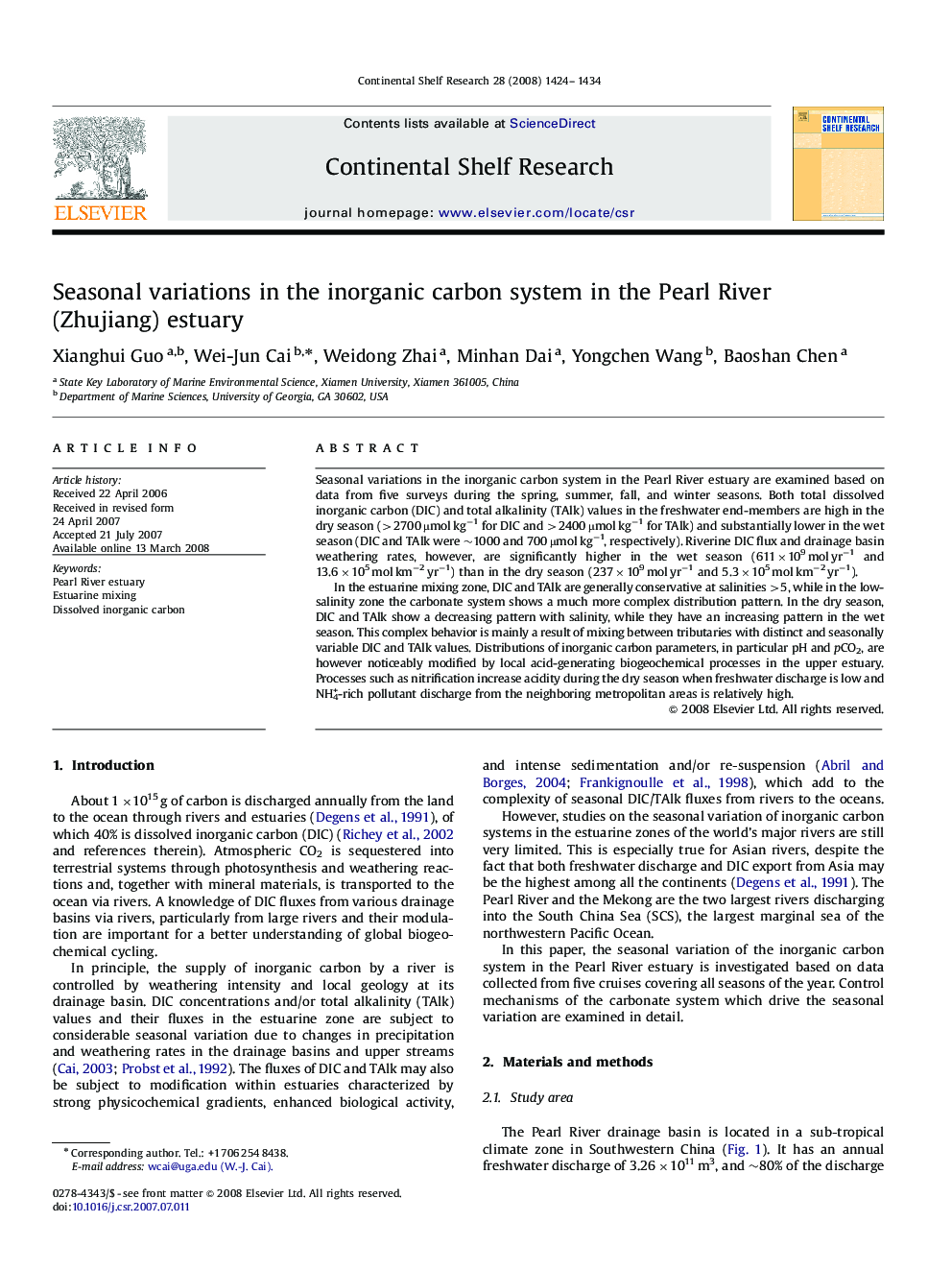| Article ID | Journal | Published Year | Pages | File Type |
|---|---|---|---|---|
| 4533568 | Continental Shelf Research | 2008 | 11 Pages |
Seasonal variations in the inorganic carbon system in the Pearl River estuary are examined based on data from five surveys during the spring, summer, fall, and winter seasons. Both total dissolved inorganic carbon (DIC) and total alkalinity (TAlk) values in the freshwater end-members are high in the dry season (>2700 μmol kg−1 for DIC and >2400 μmol kg−1 for TAlk) and substantially lower in the wet season (DIC and TAlk were ∼1000 and 700 μmol kg−1, respectively). Riverine DIC flux and drainage basin weathering rates, however, are significantly higher in the wet season (611×109 mol yr−1 and 13.6×105 mol km−2 yr−1) than in the dry season (237×109 mol yr−1 and 5.3×105 mol km−2 yr−1).In the estuarine mixing zone, DIC and TAlk are generally conservative at salinities >5, while in the low-salinity zone the carbonate system shows a much more complex distribution pattern. In the dry season, DIC and TAlk show a decreasing pattern with salinity, while they have an increasing pattern in the wet season. This complex behavior is mainly a result of mixing between tributaries with distinct and seasonally variable DIC and TAlk values. Distributions of inorganic carbon parameters, in particular pH and pCO2, are however noticeably modified by local acid-generating biogeochemical processes in the upper estuary. Processes such as nitrification increase acidity during the dry season when freshwater discharge is low and NH4+-rich pollutant discharge from the neighboring metropolitan areas is relatively high.
